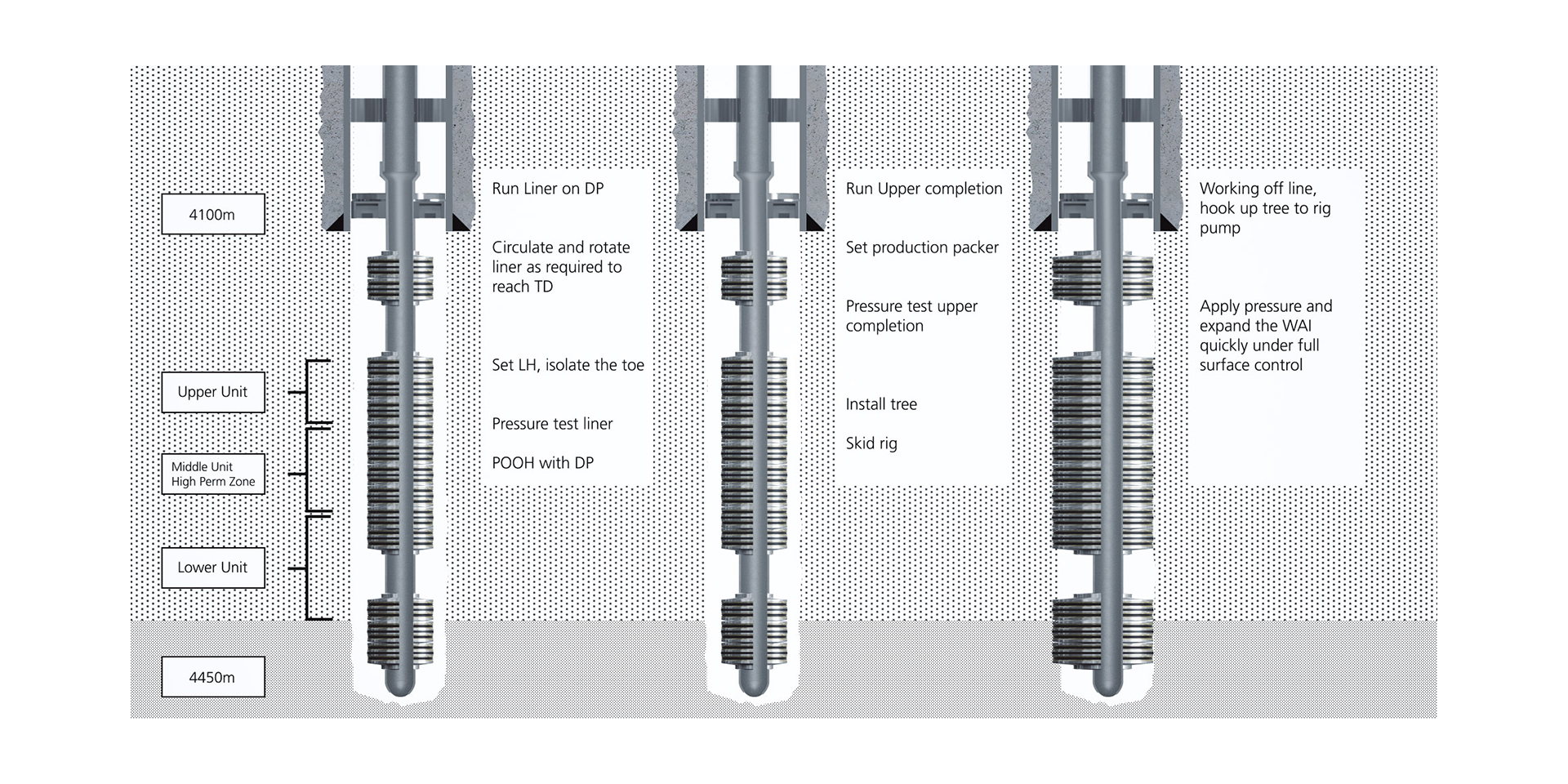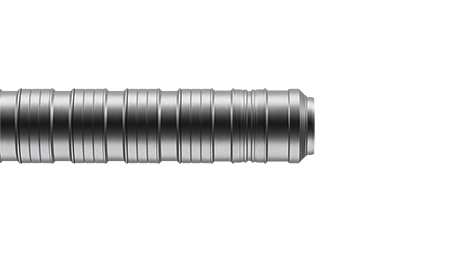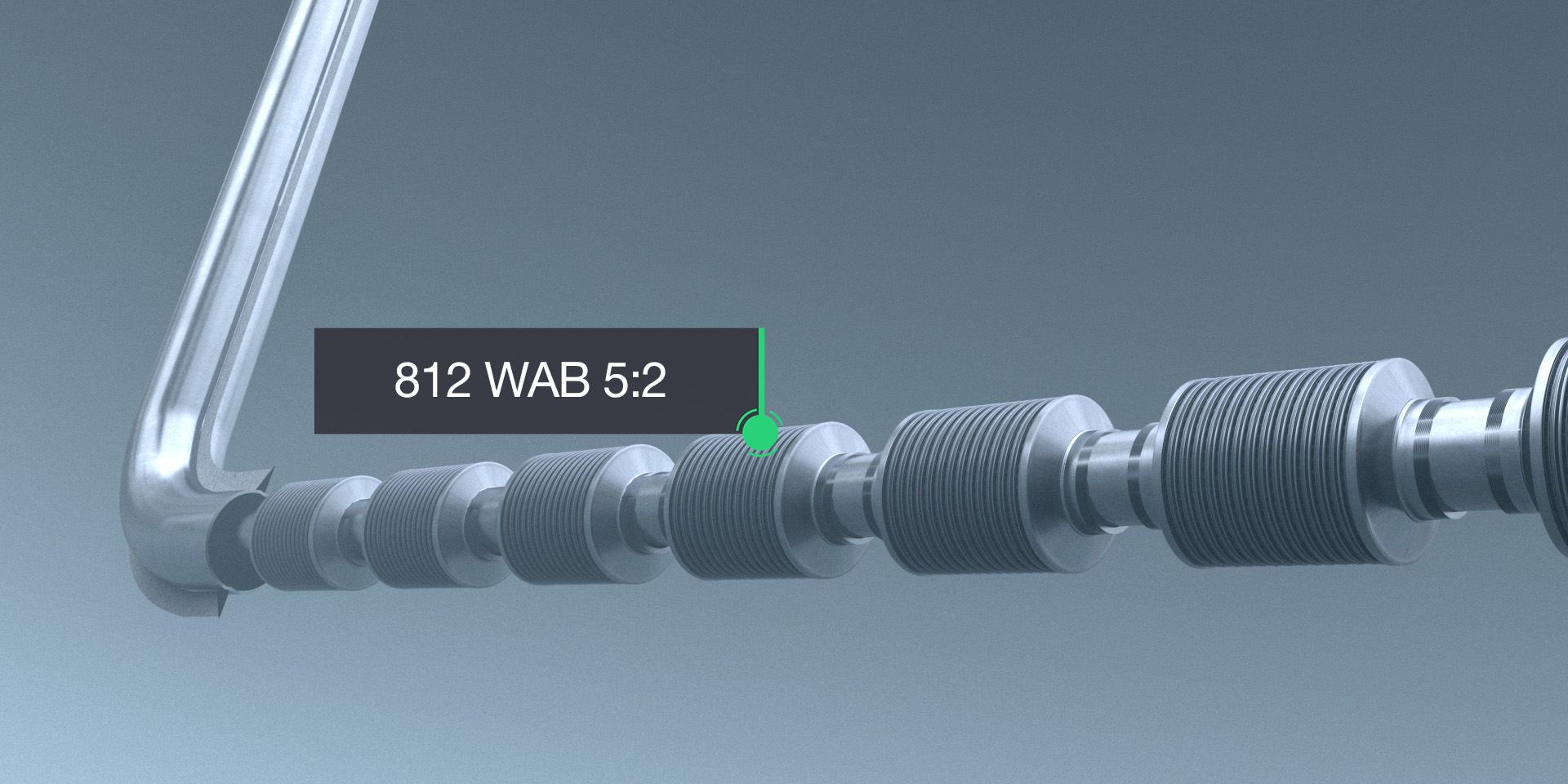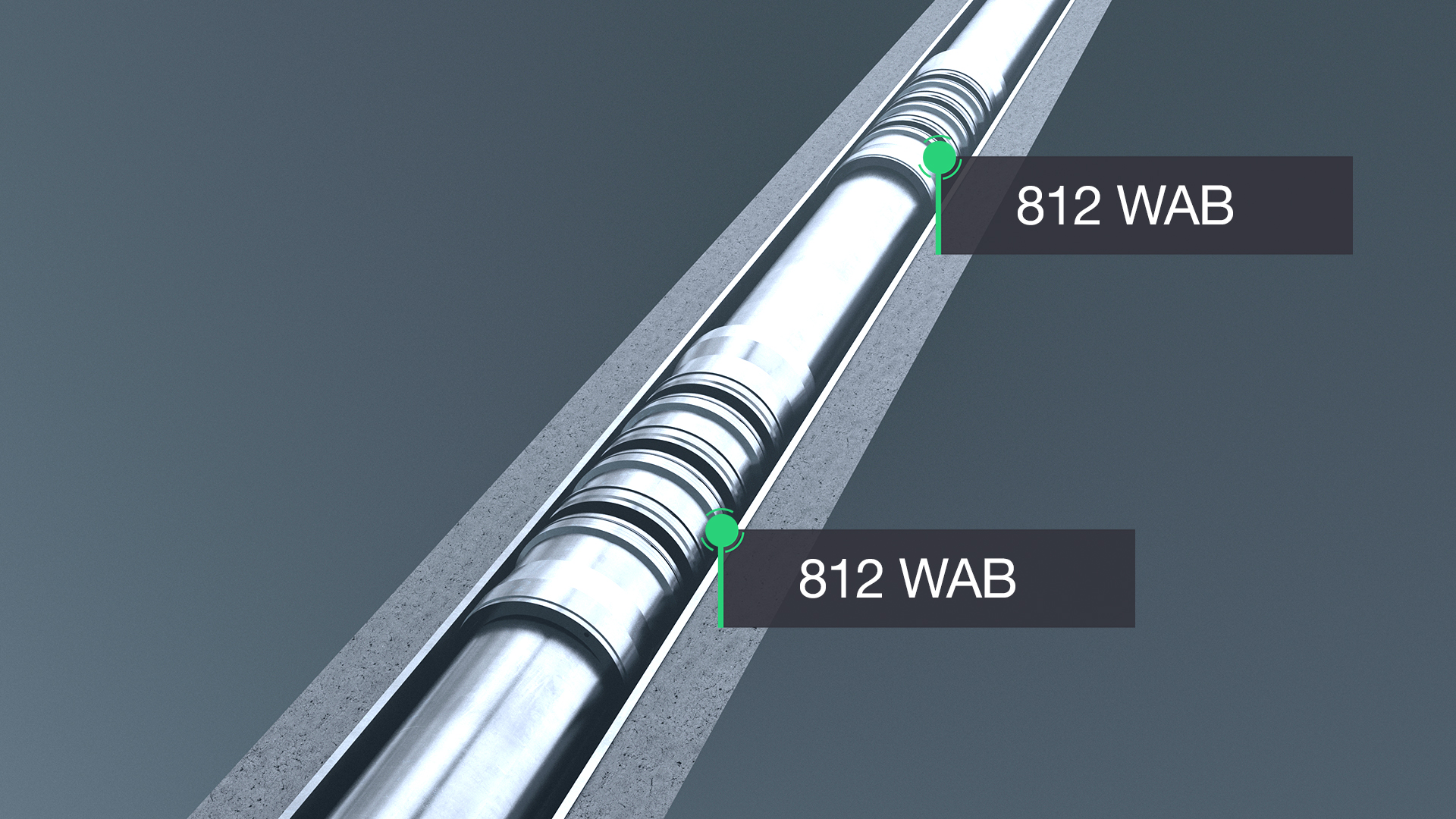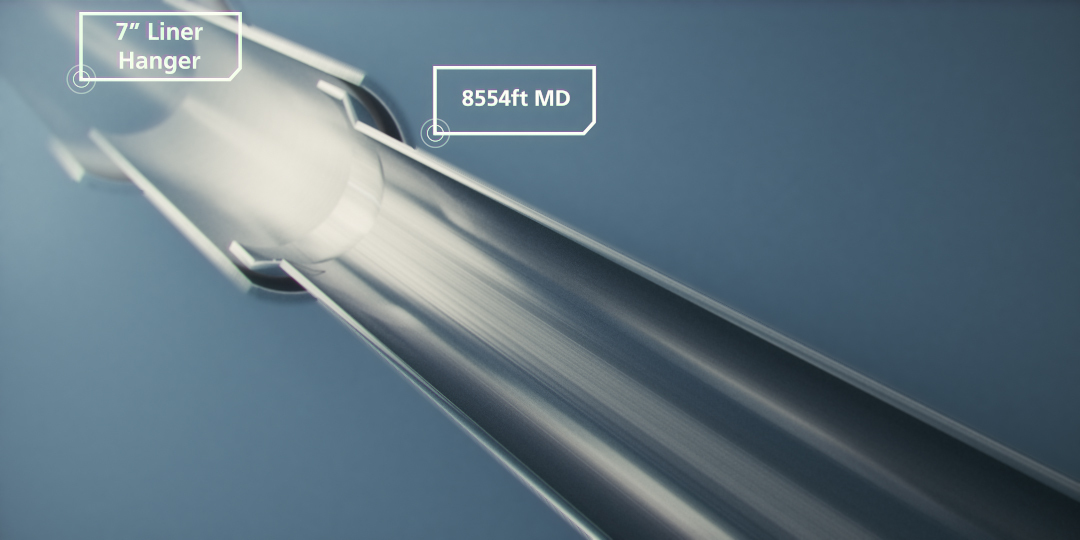Cement replacement in a laminated Albian reservoir
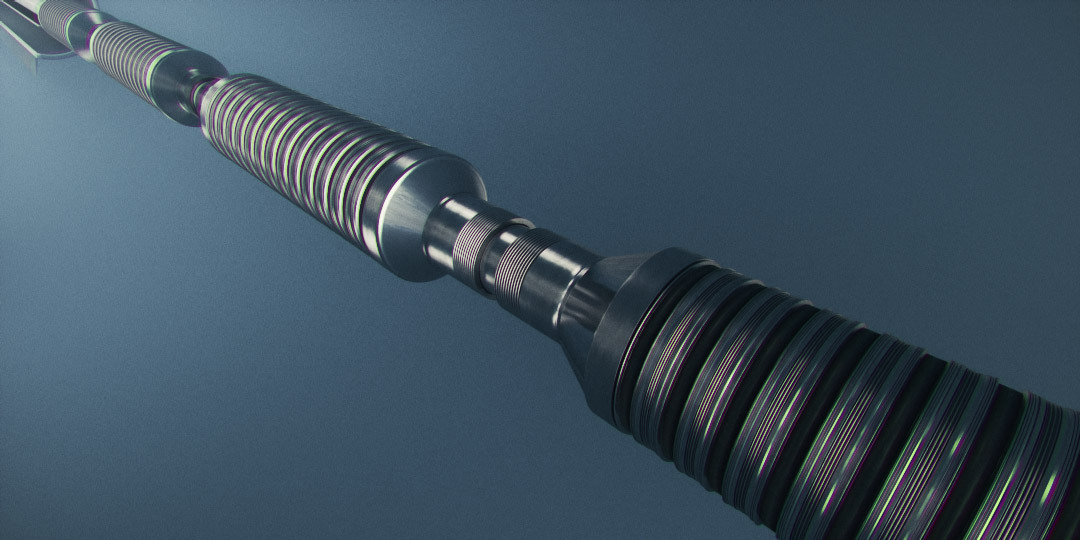
- Well type Water injector
- Max. inclination 30°
- Pressure 468 bar (6,787 psi)
- temperature 287.6°F (142°C)
- DEPTH OF DEPLOYMENT 14,530 ft (4,444 m)
- Number of packers installed 80 metal expandable sleeves
- Length of drain covered 590.5 ft (180 m)
Background
Many wells that have well integrity and zonal isolation issues are due to failure of cement. Attempting to place cement and achieve full circumferential coverage around a pipe that is several kilometers downhole can be challenging due to gravitational effects, especially if the well is deviated.
Another cementing challenge is contamination with mud. Wells that suffer from these issues can often produce 60%-70% water from day one which is a major contributor to cost overrun.
In an offshore field in West Africa, an IOC was facing several challenges related to cement contamination in high temperature reservoirs. Due to the highly laminated and heterogeneous carbonated reservoir, the client had trouble with cementing in a short HPHT deviated 4½” in a 6 ½” hole. Critical for the operation was the primary isolation for diversion during acid stimulation to ensure the productivity throughout the life of the well.
Solution
As part of the IOC’s global efficiency drive to reduce CAPEX and well construction costs, the Welltec® Annular Isolation (WAI) was highlighted as a cement-less alternative with significant advantages when deployed.
The WAI signifies a simpler and cost-effective way of eliminating the need to use cement in deviated and HPHT reservoirs. By using multiple metal expandable packers to provide long length open hole zonal isolation and effectively replace the functions of traditional cement, significant gains in efficiency are reached in the overall well construction process.
A water injector well that had the ability to pre-produce was identified as the candidate well for WAI implementation.
Operation
The short, highly deviated reservoir section was drilled out using only a 6 ½” bit, and the maiden WAI, incorporating 80 metal expandable packers, optimized over 20 x tubing joints, was deployed, reaching the TD of the well without issue. The WAI’s ability to remove the need for cement, further eliminated the need to perform additional underreaming to 7 ¼”, normally used to increase the annular flow area required for cement placement.
After the conventional liner top packer was set and tested, the upper completion was then installed and also tested. Subsequently, after installation of the wellhead, the WAI’s metal expandable sleeves were expanded offline after which point the assembly could be perforated, cleaned up and the water injector pre-produced.
During the pre-production phase, it was confirmed that the well productivity was as expected, but significantly, it was producing with zero % water cut.
Achievements
The free annulus space between the liner/casing and the open hole was significantly reduced which is beneficial in highly layered reservoirs of varying permeability where selective production, stimulation or water shut off is required. In addition to the efficiency gains, the simplified well completions operations enabled by the WAI eliminated multiple operational risks associated with the cementing process while maintaining negative skin. In this process, the well solution shifted from the Welltec Annular Barrier (WAB®) for cement assurance to the WAI.
The IOC achieved a substantial reduction in well construction costs of 2.8 MUSD by deploying the WAI. Considering the criticality and short timeline for the candidate well, Welltec’s fast track approach ensured that the time from the first qualification to the first deployment happened in less than 9 months. By choosing the WAI, operations were simplified and several phases in the well construction, along with the use of cement, were entirely eliminated resulting in substantial financial, logistical and environmental savings.
In addition, this solution led to dramatic reductions in rig time which saved 4 days compared to the best composite well and 10 days compared to the average well whilst significantly reducing associated non-production time (NPT) risk.
Well schematics
